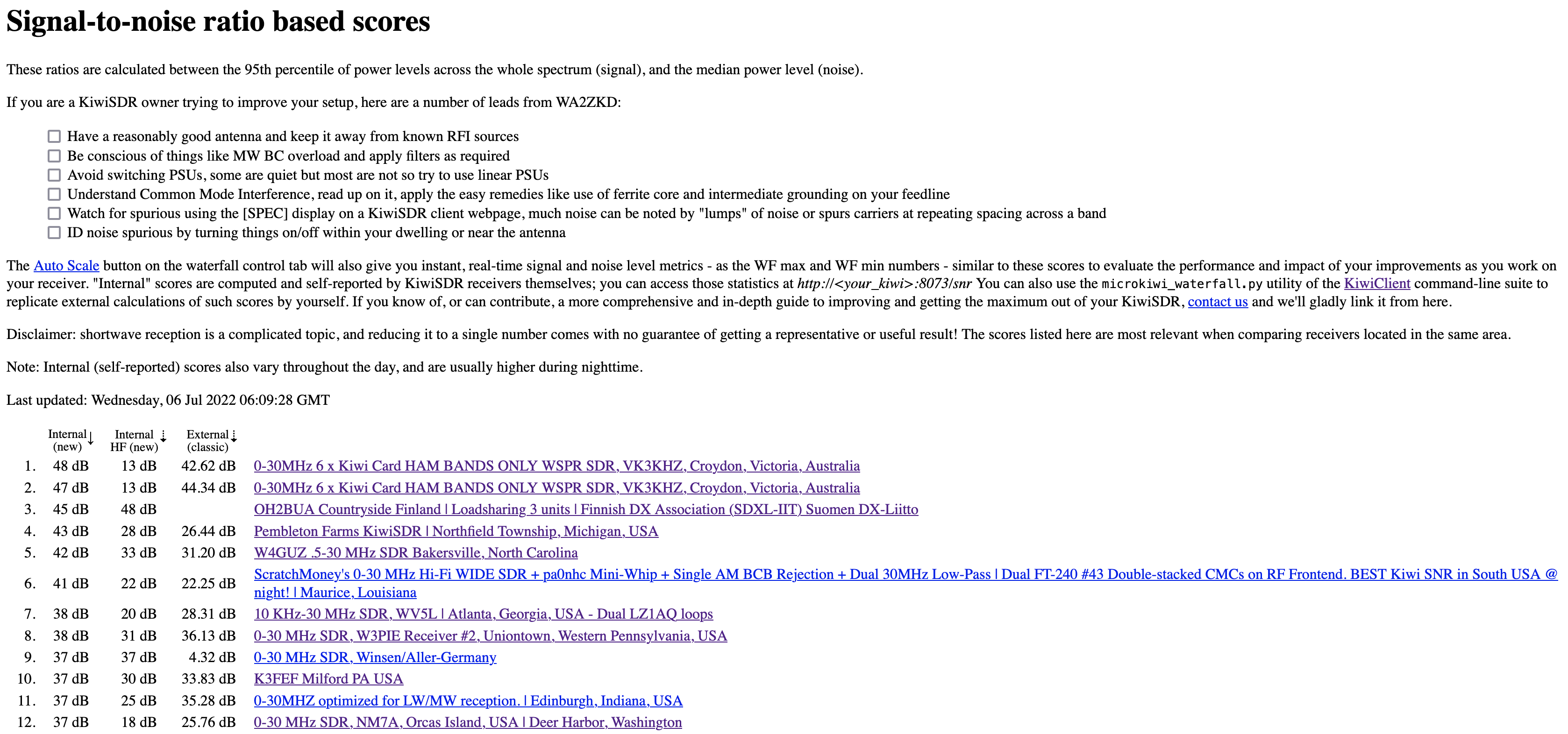For some time, I have been trying to improve the SNR score reported by my KiwiSDR.
During the first year I was living on Orcas Island, my friends helped me put up a “temporary” Beverage antenna for Field Day, and after Field Day, I connected it to my KiwiSDR. I got all kinds of reports of how useful the SDR was and how quiet the antenna was, allowing people to hear things they could not hear at home.
About a year ago, I had to take down the “temporary” antenna, and I resolved to put up a more permanent Beverage antenna in its place. After a number of steps, this past weekend I finally pulled all of the pieces together and I now have a 220 meter long unterminated Beverage antenna pointed NE, roughly at Europe.
As soon as I could, I connected the new Beverage to the KiwiSDR, and this evening, after it had been connected for about 8 hours, I went to the KiwiSDR SNR aggregation page and was astonished to find that I had leapt far up the list. The best showing I had seen in the past was perhaps 75th place (and more commonly, 125th or so), and I saw that I was at number 10 out of over 650. This number varies over time as conditions change, but I am very pleased to see that the effort to put up the new antenna already seems to be paying off.
The ranking shown on the page above is very deceptive, however: As the page states, SNR scores are usually best early in the morning, because man-made noise levels tend to be lowest then, and propagation on the higher HF bands begins to fade in early in the morning, thereby reducing the “N” and increasing the “S” in SNR. Depending on propagation conditions, signals may be higher or lower, somewhat independent of local noise, so I notice my position on the list varying wildly now; running from being in the top 20, down to being where it used to be, around 120th or so.


